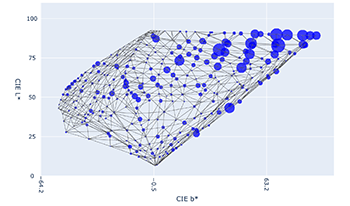
Colors are characterized by their appearance attributes such as brightness, colorfulness and hue, or lightness, chroma and hue when considered relative to an adapted white. Consequently, they can be represented by coordinates in three-dimensional spaces like those of CIELAB or CIECAM02 appearance predictors. Therefore, the color of a stimulus is customarily associated with a point in 3D. While this is appropriate when dealing with theoretical quantities, in practice the color space coordinates of a stimulus are subject to variations both in the stimulus itself and in its measurements. This tends to lead to multiple measurements being the basis of identifying the color of a stimulus by averaging them and in some cases excluding outliers. This, however, obscures the fundamental variability of color data. In this paper an alternative, probabilistic approach to dealing with color data will be introduced and applied to the computation of color difference, color gamuts and gamut inclusion, yielding distributions of answers instead of only single values.
Ján Morovic, Peter Morovic, "Mean Color, Probably" in Color and Imaging Conference, 2024, pp 114 - 121, https://doi.org/10.2352/CIC.2024.32.1.22
 Find this author on Google Scholar
Find this author on Google Scholar Find this author on PubMed
Find this author on PubMed